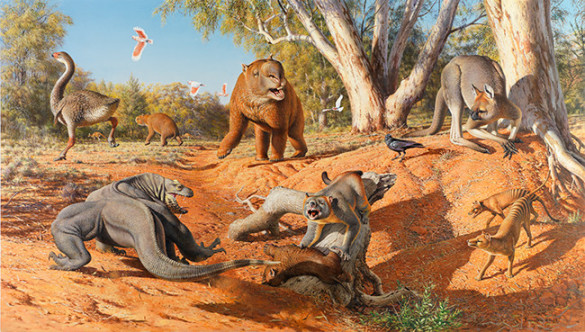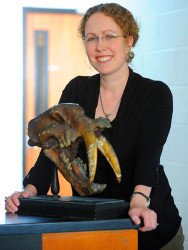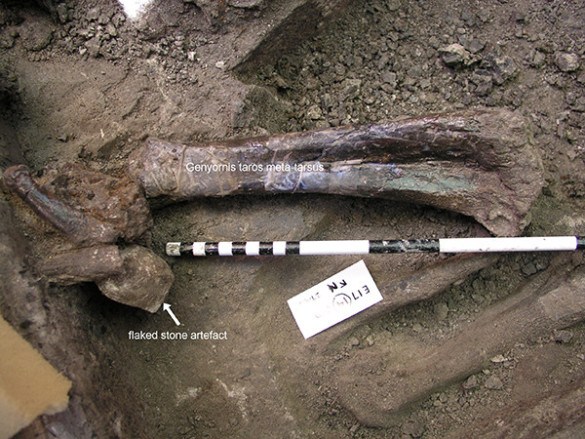Climate change helped kill off super-sized Ice Age animals in Australia
by David Salisbury Jan. 26, 2017, 2:00 PMDuring the last Ice Age, Australia, Tasmania and New Guinea formed a single landmass, called Sahul. It was a strange and often hostile place populated by a bizarre cast of giant animals.
There were 500-pound kangaroos, marsupial tapirs the size of horses and wombat-like creatures the size of hippos. There were flightless birds that weighed twice as much as modern emu, 33-foot snakes, 20-foot crocodiles, 8-foot turtles with horned heads and spiked tails, and giant monitor lizards that measured greater than 6 feet from tip to tail and were likely venomous.

By about 30,000 years ago, however, most of these ‘megafauna’ had disappeared from the Sahul as part of a global mass extinction that saw the end of nearly all of the super-sized animals that had evolved to survive in extreme Ice Age climates. The factors that forced the Australian megafauna into extinction remain a matter of considerable controversy. Many experts argue that the ancestors of the Australian aborigines, who made an appearance approximately 50,000 years ago, either hunted them into extinction or gradually destroyed the habitat they required by practices such as fire-stick burning. Others argue that the gradual drying out of Australia and weakening of the Australian monsoon played a major role in their demise.
A new study has compared the diet of a variety of Australian megafaunal herbivores from the period when they were widespread (350,000 to 570,000 years ago) to a period when they were in decline (30,000 to 40,000 years ago) by studying their fossil teeth. The analysis suggests that climate change had a significant impact on their diets and may well have been a primary factor in their extinction.

“We have found evidence that, as the climate was changing and getting drier, animal diets were shifting dramatically,” said Larisa DeSantis, assistant professor of earth and environmental studies at Vanderbilt University, who directed the study. “If climate change was a primary or contributing factor in their demise, as it appears, we need to pay more attention to how current levels of climate change are affecting animals today.”
The results of the study are described in a paper titled “Dietary responses of Sahul (Pleistocene Australia-New Guinea) megafauna to climate and environmental change” published on Jan. 25 by the journal Paleobiology. Co-authors on the paper are Judith Field and John Dodson from the University of New South Wales and Stephen Wroe from the University of New England.
Michael Archer, a leading Australian paleontologist at the University of New South Wales who was not involved in the study, commented, “This new study, based on hard evidence, makes it clear that changes in late Pleistocene climate had a major impact on the late Pleistocene megafauna of Australia, adding even more evidence to challenge the imaginative a priori assumption that ‘blitzkrieg’ by early humans caused the extinction of this continent’s lost megafauna. Climate change clearly has been in the past and will continue to be a major cause of extinction into the future.”
The teeth that were analyzed came from the Cuddie Springs site in southeastern Australia. It is located on a prehistoric ephemeral lake and it is the only site on mainland Australia that has produced fossil evidence of the co-existence of humans and megafauna. “Unfortunately, many of the advocates of the human predation hypothesis have discounted Cuddie Springs because it does not support the popular ‘blitzkrieg’ theory that maintains the megafauna went extinct in the 1,000-year period after humans arrived on the scene,” said DeSantis.

Keine Kommentare:
Kommentar veröffentlichen